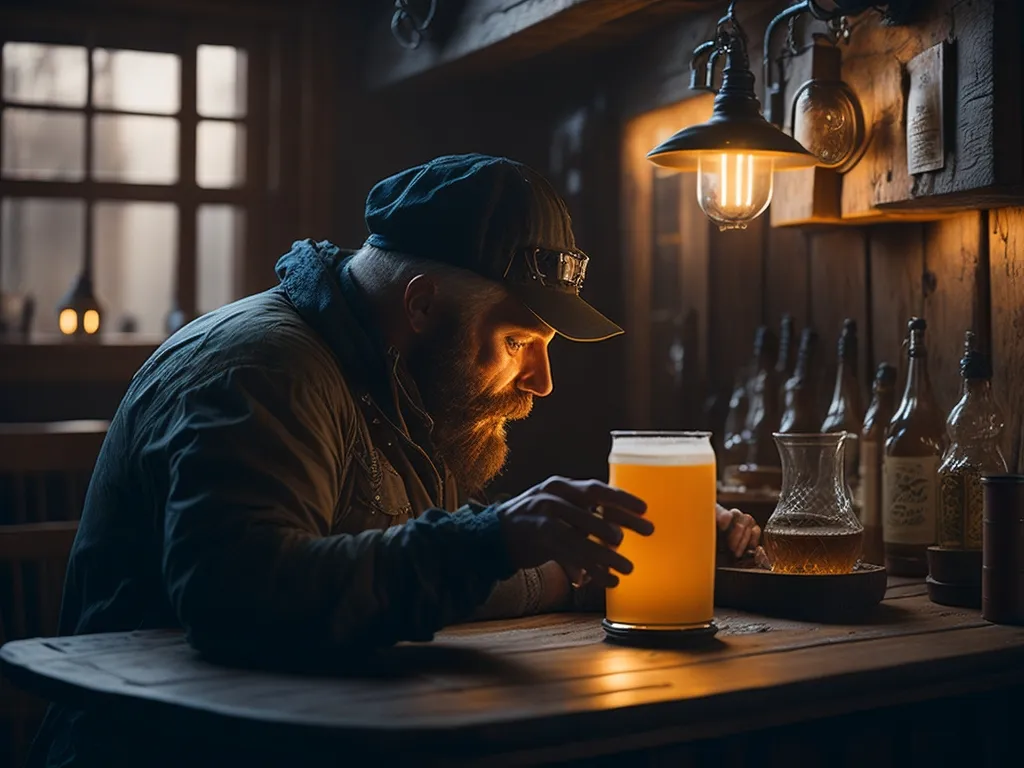Introduction
Imagine this: You’re sitting at a cozy pub, and the bartender places a frosty glass of craft beer in front of you. The aroma is intoxicating, the bubbles effervescent, and the flavor – divine. Beer tasting is not just about drinking; it’s a sensory experience that can transport you to different places. If you’re keen on diving into the world of beers, you’re in for a treat! In this guide, we’ll explore how beer tasting enhances appreciation, and delve into the nuts and bolts of tasting techniques. You’ll also uncover the fascinating world of flavors, and how to pair them with food. So, shall we?
Table of Contents
The Basics of Beer Tasting
Understanding the key elements: aroma, appearance, flavor, mouthfeel
When it comes to beer tasting, there are four primary elements that craft a beer’s identity: aroma, appearance, flavor, and mouthfeel. By paying attention to these aspects, you can enhance your beer tasting skills and ultimately enrich your craft beer experience.

- Aroma: A beer’s aroma is the first thing you’ll notice. This aromatic profile can be vastly complex, reflecting the ingredients used and the brewing process. The beer’s aroma may contain hints of grains, hops, yeast, fruits, and spices.
- Appearance: The way a beer looks can tell you a lot about its character. The color, clarity, and the nature of the head (the foam on top) are all factors that can give you clues about what to expect in terms of flavor and texture.
- Flavor: This is the heart of the beer tasting experience. The flavors of a beer are influenced by various factors, including the type of malt, hops, yeast, and any additional ingredients. It’s important to let the beer roll over your tongue to catch the full range of tastes.
- Mouthfeel: How a beer feels in your mouth contributes significantly to the overall beer experience. It includes aspects such as carbonation, temperature, and the perception of weight or body in the mouth.
How to properly use your senses when tasting beer
To truly appreciate a beer, it’s important to use all your senses. Here are some beer tasting tips on how to do so:
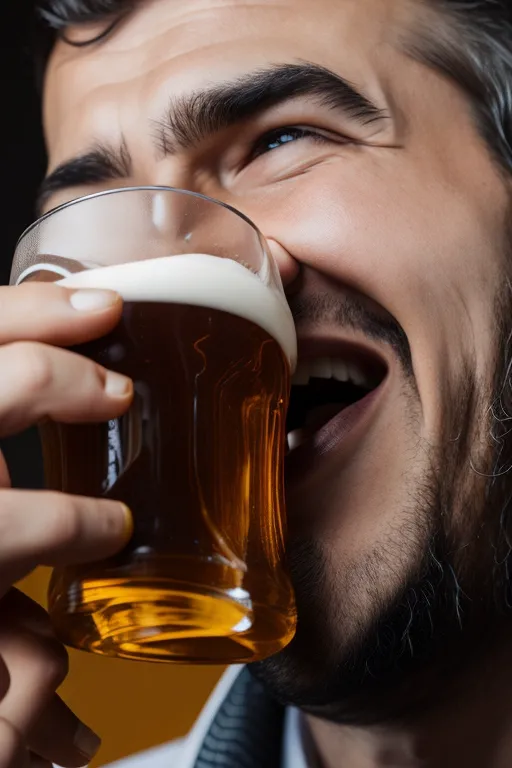
- Look: Observe the beer’s appearance. Notice its color, clarity, and the amount and consistency of the foam.
- Smell: Take a good whiff before you take a sip. A large part of our taste perception is linked to our sense of smell, so this step is crucial.
- Taste: Don’t just gulp it down. Let the beer spread across your palate to engage all your taste buds. Take note of the flavors you can identify.
- Feel: Pay attention to how the beer feels in your mouth. Is it light or heavy? Smooth or fizzy?
- Listen: Yes, you read that right. Listen to the sound of the beer being poured, the fizz, the clink of the glass. These are all part of the holistic beer experience.
Enhancing Your Beer Tasting Experience
Choosing the right glassware for different beer styles
One of the underrated aspects of enjoying a beer is the glass you drink from. Different beers have different characteristics, and the glassware you choose can influence your beer tasting experience in surprising ways.
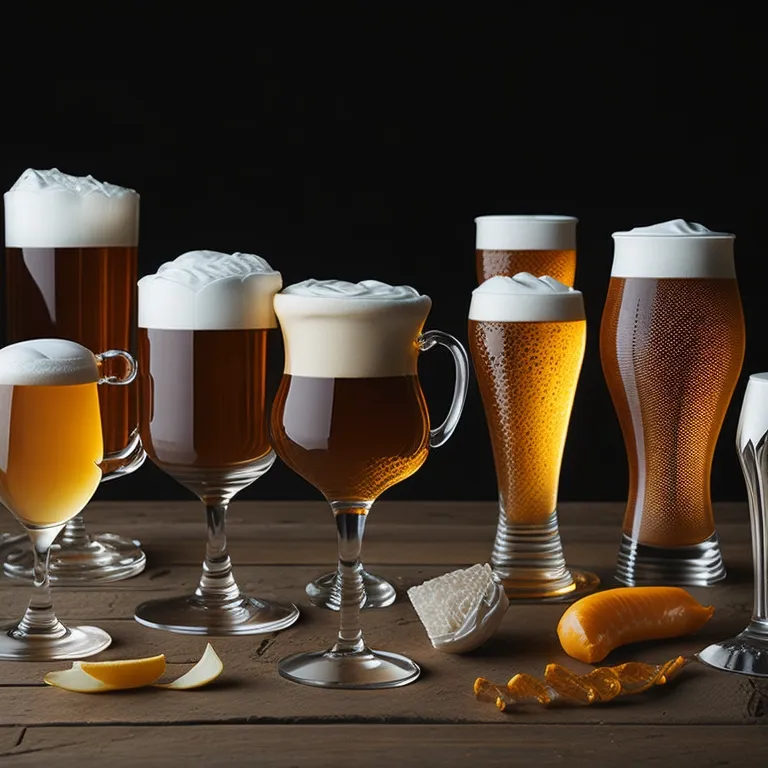
The shape and size of a beer glass can affect not just the look and the aroma of the beer, but also its taste. The right glass can highlight a beer’s unique features, make it more visually appealing, and intensify its aroma.
For instance, the popular pint glass, with its simple and tall design, is ideal for many types of ales and lagers. Its wide rim allows for hearty sips, making it perfect for enjoying malty, creamy brews.
On the other hand, a tulip glass, with its inward taper near the top, helps to trap and enhance the aromatic compounds in the beer, allowing a fuller exploration of the beer’s aroma. This type of glass is perfect for strong, aromatic beers like IPAs and Belgian ales.
The weizen glass, with its tall and narrow design, is ideal for wheat beers. It showcases the beer’s color and carbonation beautifully while the narrow top helps maintain a thick head, preserving the aroma.
So, the next time you go for a craft beer tasting, remember that the right glassware can elevate the experience by leaps and bounds.
The importance of temperature and serving techniques
Serving beer at the correct temperature is vital to fully appreciate the flavor profiles it has to offer. Serving a beer too cold can dampen its flavors and aromas, while serving it too warm may enhance the alcohol taste, masking other flavors.
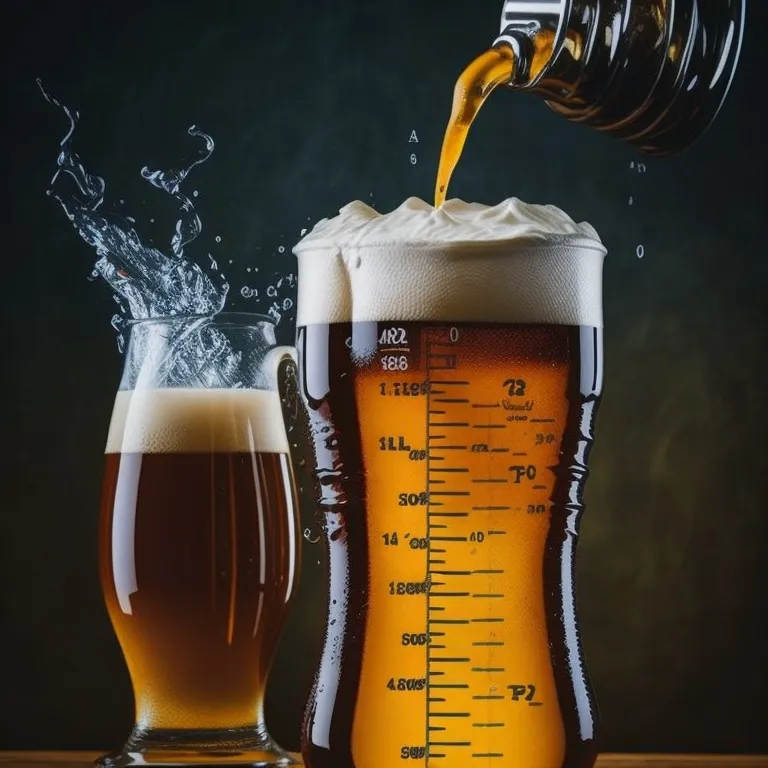
Generally, lighter beers like pilsners, lagers, or wheat beers are best served chilled, at around 4-7 degrees Celsius. This enhances their refreshing and crisp characteristics. Darker, more robust beers, such as stouts or porters, are typically served at slightly warmer temperatures, around 12-14 degrees Celsius. This allows their complex flavors to unfold.
The serving technique is another key element of the craft beer experience. Pouring beer is not just about transferring it from the bottle to the glass; it’s an art. The way you pour can affect the formation of the beer head (the foam), which is crucial for trapping the beer’s aromas.
Hold your glass at a 45-degree angle and pour the beer, targeting the middle of the slope of the glass. When it’s about halfway full, straighten the glass and continue to pour in the middle. This method ensures a perfect head that will enhance the beer’s aroma, making your tasting experience more enjoyable.
How to develop a beer tasting vocabulary
In the world of beer tasting, the words you use to describe your experience can significantly enhance your appreciation of the brew. Developing a specific vocabulary allows you to express your perceptions and share them with others.
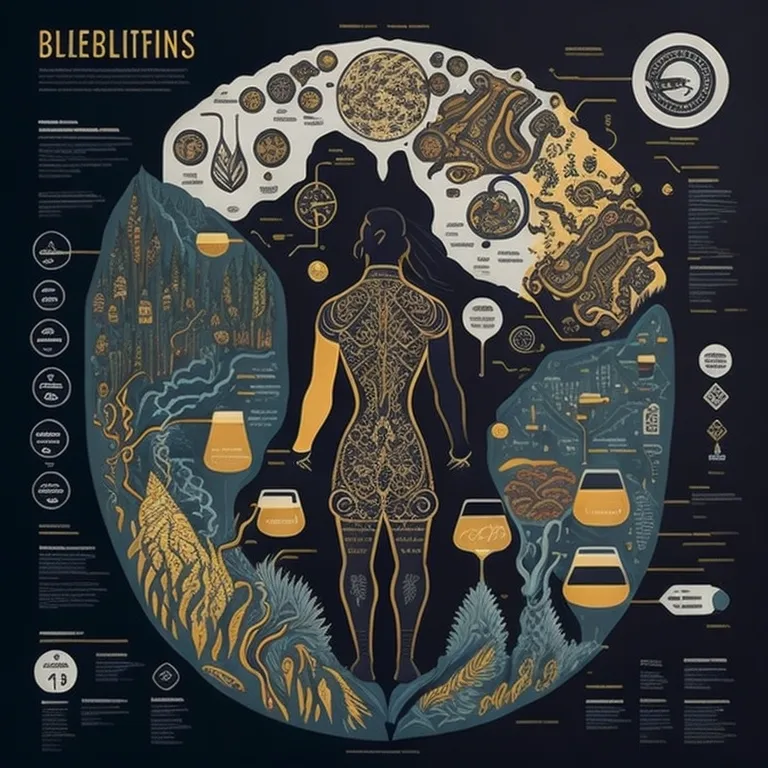
Start with basic adjectives to describe the four key elements of beer: aroma, appearance, flavor, and mouthfeel. For instance, the aroma could be “fruity,” “floral,” “spicy,” or “malty.” The appearance could be “clear,” “hazy,” “dark,” or “amber.”
When it comes to flavor, words like “bitter,” “sweet,” “sour,” “rich,” or “light” could be useful. Describing the mouthfeel, you might use terms like “creamy,” “fizzy,” “smooth,” or “dry.”
As you continue your beer tasting journey, your vocabulary will naturally expand. You’ll start to pick up more complex flavor profiles and subtle notes. You might start identifying specific fruits, spices, or types of malt. Perhaps you’ll use words like “caramel,” “banana,” “pepper,” or “rye.”
Remember, there are no right or wrong descriptions. The goal is to enhance your craft beer experience by paying attention, noticing the details, and finding the words to describe your unique experience.
Step-by-Step Beer Tasting Guide
Appearance: Assessing color, clarity, and carbonation
The first step in beer tasting is to use your eyes. Visual aspects can offer significant clues about a beer’s character and style.
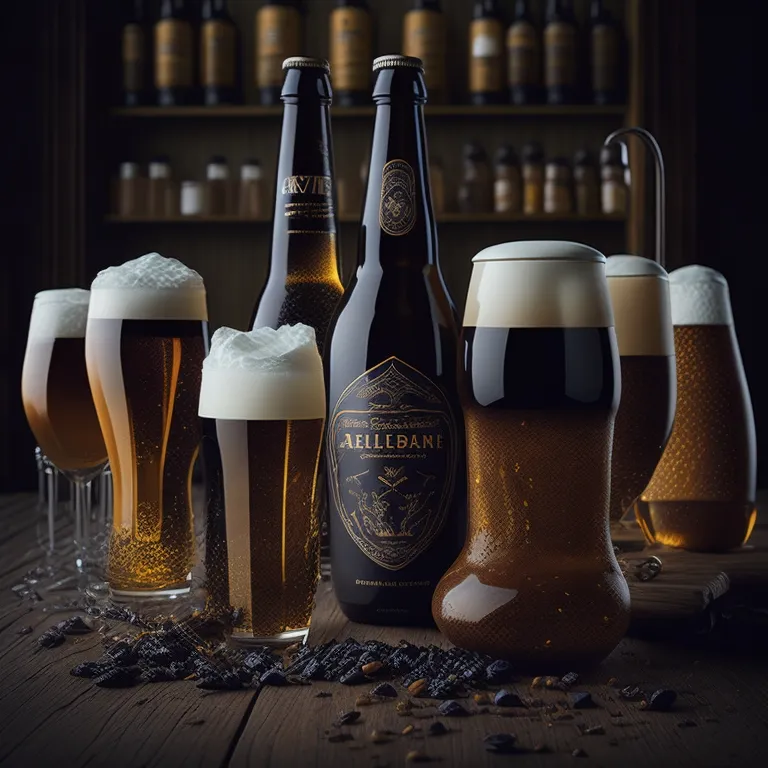
- Color: Beers range from pale straw to inky black. Lighter beers are usually pilsners, wheat beers, or light lagers, while amber to dark beers are likely to be ales, stouts, or porters. The color can also indicate the types of malt used in the brewing process. Darker beers typically use more roasted or caramelized malt, suggesting flavors like chocolate, coffee, or caramel.
- Clarity: The clarity of a beer can vary from crystal clear to hazy or even opaque. Some styles, like wheat beers or certain IPAs, are expected to be hazy due to yeast, protein, or hop residue. On the other hand, clarity in styles like lagers or pilsners is a sign of quality.
- Carbonation: The bubbles rising to the top of your glass indicate the beer’s carbonation level. It also contributes to the beer’s mouthfeel and the stability of the head. Overly fizzy beer might suggest over-carbonation, while a flat beer could mean it’s past its prime.
Before you take that first sip, take a moment to appreciate the beer’s visual attributes. They’re the prologue to your craft beer tasting experience.
Aroma: Recognizing different aromas and their significance
The aroma is a significant part of the beer tasting process. It prepares your palate for the flavors and can account for up to 80% of a beer’s flavor profile.
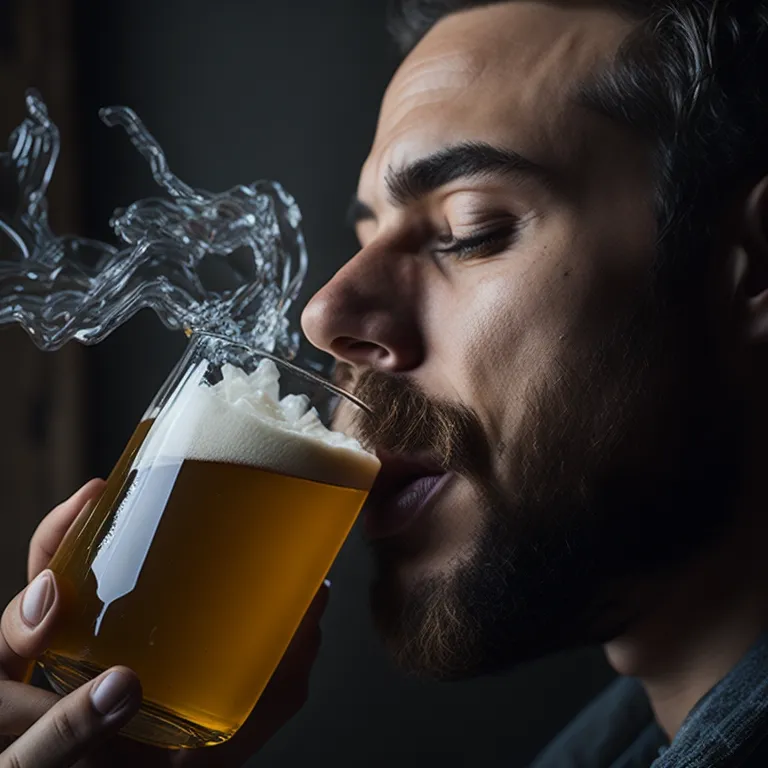
Before you take a sniff, give your beer a gentle swirl in the glass. This action releases the beer’s aromatic compounds, enhancing your ability to perceive them.
Inhale deeply and try to identify what you smell. Common descriptors include fruity, floral, malty, hoppy, and spicy. These aromas come from different ingredients and brewing processes:
- Fruity and floral aromas often come from the hops or yeast used in the brewing process.
- Malty aromas suggest the presence of malted grains, indicating flavors like biscuit, caramel, or chocolate.
- Hoppy aromas might suggest pine, grass, or citrus, depending on the hop variety.
- Spicy aromas can come from yeast, certain types of malt, or even added spices.
Common off-flavors to watch out for
While beer tasting, it’s also essential to recognize off-flavors. These are undesirable flavors that indicate problems in the brewing process, poor quality ingredients, or improper storage.
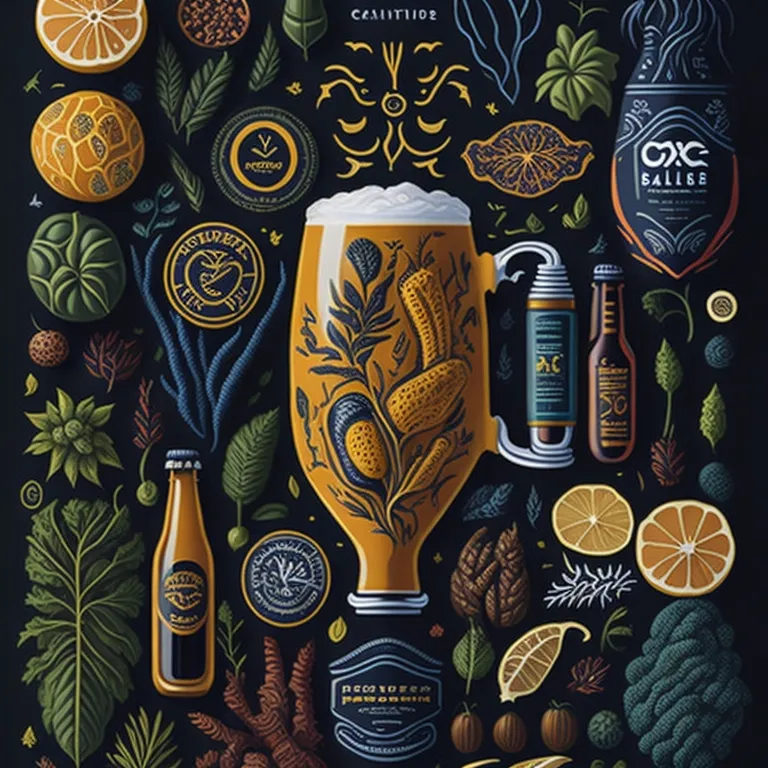
- Skunky: This aroma is often associated with light-struck beer, usually bottled in clear or green glass and exposed to UV light.
- Buttery or popcorn-like: These flavors can indicate diacetyl, a compound that should be mostly eliminated during the fermentation process.
- Metallic: This off-flavor can come from brewing equipment, water supply, or damaged can linings.
- Sour or vinegary: Unless it’s a sour beer style, these flavors can indicate bacterial contamination.
- Musty or cork-like: These aromas might suggest an issue with the beer’s age or storage conditions.
Identifying these off-flavors helps ensure a quality craft beer experience and can increase your appreciation for well-crafted beers.
Flavor: Understanding the taste profile and balance
Now, we arrive at the main event of beer tasting: the flavor. Take a good sip, let the beer roll over your tongue and try to identify the flavors.
Your palate can detect five basic tastes: sweet, bitter, sour, salty, and umami. Most beers exhibit sweetness from malt and bitterness from hops. The balance between these two is a significant aspect of a beer’s flavor profile.
A well-balanced beer doesn’t necessarily mean that the sweetness and bitterness are equal. It means that the flavors work well together, and one doesn’t overpower the other. Depending on the style, a beer might lean towards bitter (like an IPA) or sweet (like a stout), but it should still have some level of balance.
Remember, beer tasting isn’t a race. Take your time to savor each sip and contemplate the flavors. The goal is not just to drink the beer, but to understand and appreciate its complexity and craftsmanship.
Identifying flavors in different beer styles
Different beer styles have different expected flavors, determined by their ingredients and brewing methods. Here are some common styles and their typical flavor profiles:
- Pilsner: Crisp and clean with a subtle sweetness and a bitter hop finish.
- IPA (India Pale Ale): Noted for its strong hop bitterness with floral, citrusy, or piney flavors. It may also have some maltiness.
- Stout: Dark and robust with flavors ranging from coffee and chocolate to caramel and dark fruit.
- Porter: Similar to a stout but usually lighter and less roasty. It may have notes of chocolate, caramel, and nuts.
- Wheat Beer: Light and refreshing with flavors of bread, bananas, and sometimes cloves or bubblegum.
Identifying the flavors unique to different beer styles will enhance your craft beer tasting and help you understand what makes each style distinct.
Evaluating bitterness, sweetness, acidity, and other flavor components
Understanding the balance between different flavor components is key to beer tasting.
- Bitterness: Usually comes from hops. The level of bitterness can vary widely across different styles. IPAs are known for their high level of bitterness, while wheat beers or stouts are typically less bitter.
- Sweetness: Comes from the malt used in brewing. Beers with a higher malt content, like stouts or porters, are typically sweeter.
- Acidity: Most beers have a certain level of acidity, but it’s especially notable in sour beers.
- Alcohol: In stronger beers, you might also taste the alcohol. It can contribute a warming sensation and a range of flavors from fruity to spicy.
When tasting, note how these elements play against each other. A great beer brings these components into a harmonious balance, where each aspect has its part but works in harmony with the others.
Mouthfeel: Exploring the texture, body, and carbonation
The last step in the beer-tasting process is to consider the mouthfeel. This is how the beer feels in your mouth. It’s determined by factors like carbonation, alcohol level, and the beer’s body or thickness.
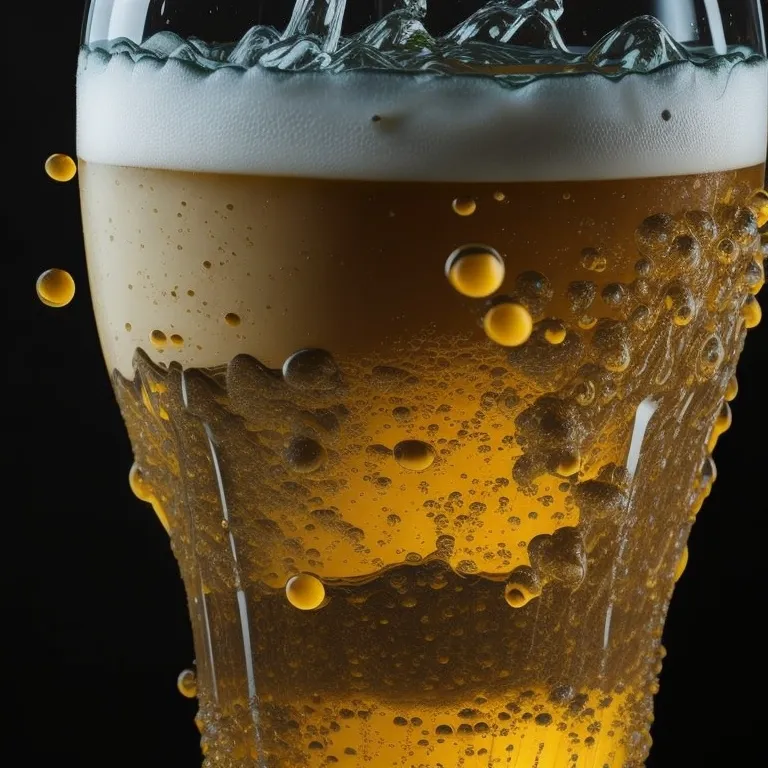
Carbonation can range from sparkling to soft. It can affect the beer’s texture and how it carries flavor. Highly carbonated beers can feel lively and crisp, while softly carbonated beers might feel smooth and creamy.
The body of a beer can be light, medium, or full, and refers to the beer’s thickness or viscosity. Light-bodied beers feel thin and crisp, while full-bodied beers feel thick and rich.
Finally, the alcohol content can contribute to the mouthfeel too. Higher alcohol content can provide a warming sensation and might make a beer feel heavier or more viscous.
In craft beer tasting, the mouthfeel is the final piece of the puzzle. It brings the appearance, aroma, and flavor together into a cohesive, multi-sensory experience.
Pairing Beer with Food
Principles of beer and food pairing
The key to a successful beer and food pairing is understanding how different flavors interact. Here are three fundamental principles:
- Complement: Complementary pairings highlight shared flavors between the beer and food. For example, a stout with notes of chocolate and coffee can be paired with a chocolate dessert, enhancing the similar flavors in each.
- Contrast: Contrasting pairings work by using the beer to counterbalance or highlight certain aspects of the food. For example, the bitterness of an IPA can cut through the richness of a fatty dish, making it feel less heavy.
- Cleanse: Certain beers, particularly those with high carbonation or acidity, can cleanse the palate, preparing it for the next bite. This principle works well with rich, heavy foods, where a refreshing pilsner or sour beer can provide a palate-cleansing effect.
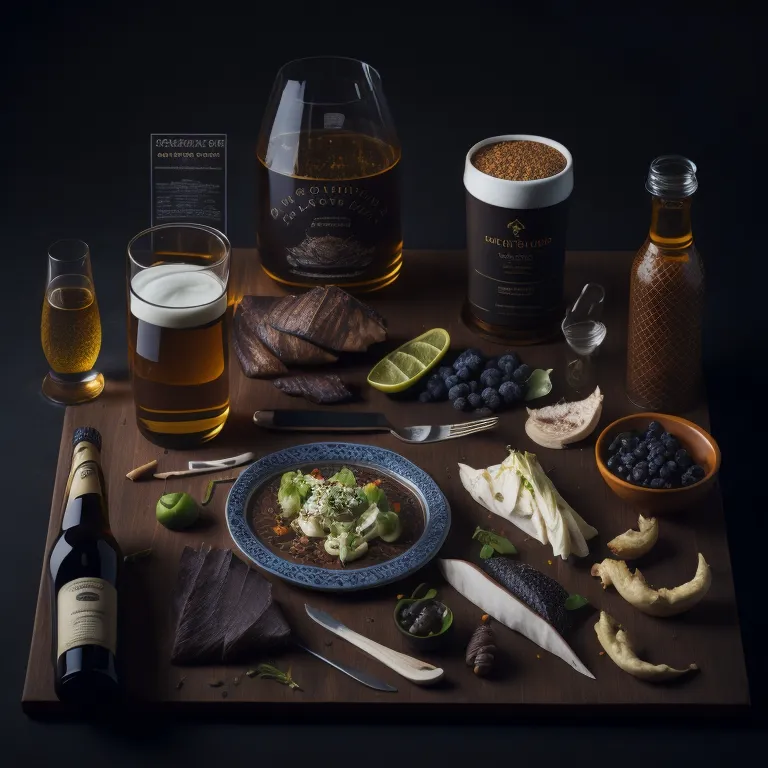
Remember, the goal of beer and food pairing is to enhance the enjoyment of both the beer and the food. The best pairings are those that create a harmony of flavors, where the beer and food bring out the best in each other.
Matching beer styles with various food types
Different beer styles pair well with different types of food. Here are some general suggestions:
- Pilsners: These light and crisp beers are versatile and can pair well with a variety of foods. They’re great with seafood, salads, or light chicken dishes.
- IPAs: The strong bitterness and hop flavors of IPAs work well with spicy foods, as the bitterness can balance the heat. They also pair well with fatty dishes like burgers or pizza, where the hops can cut through the richness.
- Stouts: The dark, roasty flavors of stouts can complement red meats and chocolate desserts. They can also contrast beautifully with sweet dishes, like caramel desserts or vanilla ice cream.
- Porters: Porters pair well with smoked or roasted foods, where their roasty flavors can complement the smokiness. They’re also great with desserts that feature nuts or caramel.
- Wheat Beers: These light and often fruity beers work well with light dishes like salads, seafood, or poultry. They can also complement fruit-based desserts.
- Sour Beers: The acidity of sour beers makes them a great match for fatty or rich foods, as they can cut through the richness. They’re also a great companion for fruit dishes or salads.
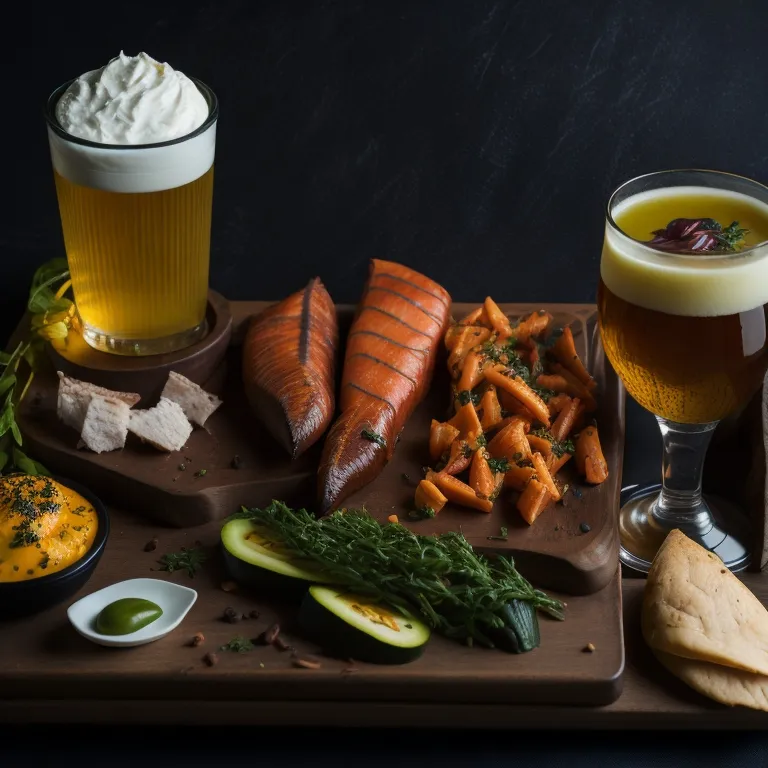
Remember, these are just guidelines. The best way to discover great pairings is to experiment and see what works for you.
Tips for hosting beer and food pairing events
Hosting a beer and food pairing event can be a fun way to explore the world of craft beer. Here are some tips to make your event a success:
- Choose a Theme: A theme can guide your beer and food selection. You might focus on a specific beer style, a particular cuisine, or even a flavor profile.
- Plan Your Pairings: Research the flavor profiles of the beers you’re serving and think about what foods might complement or contrast those flavors.
- Serve Small Portions: Small servings allow guests to taste a variety of beers and food without becoming full too quickly. Consider offering beer flights and bite-sized food servings.
- Order Matters: The order in which you serve beers can influence the tasting experience. As a general rule, start with lighter beers and move towards darker or stronger ones.
- Educate Your Guests: Part of the fun of a beer and food pairing event is learning about different beers and why they pair well with certain foods. Share your knowledge with your guests and encourage discussion.
- Encourage Experimentation: Even with planned pairings, it’s always fun to try different combinations and see what works. Encourage your guests to mix and match and share their discoveries.
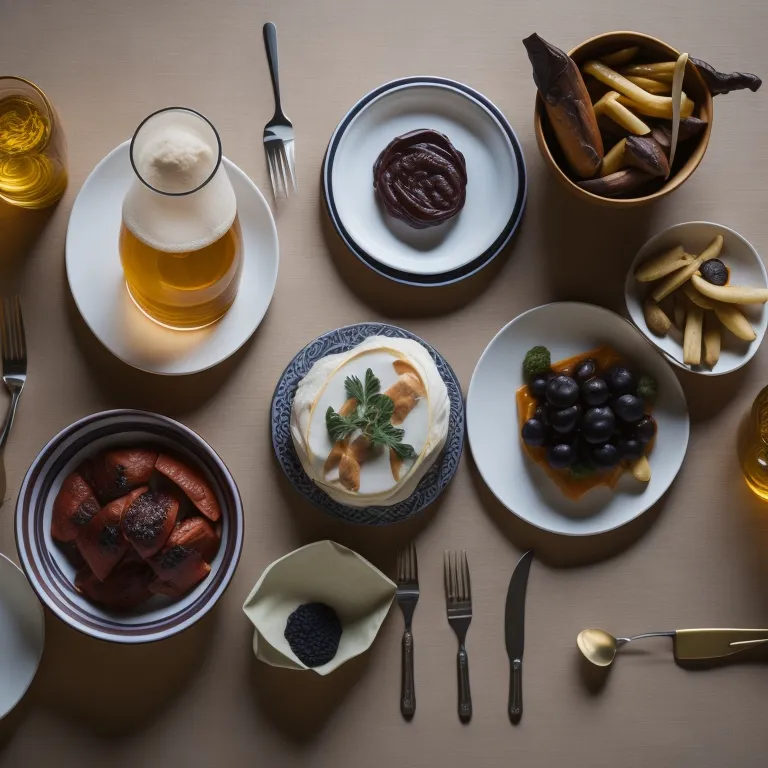
Remember, the goal of a beer and food pairing event is to have fun and explore new flavors. Happy tasting!!!
Common Beer Tasting Mistakes to Avoid
Overcoming Biases and Preconceptions
In the world of beer tasting, biases and preconceptions can often influence our perceptions and enjoyment. Here are some common biases and how to overcome them:

- Brand Bias: We often have preconceived notions about certain brands, which can impact our tasting experience. To overcome this, try blind tasting, where you don’t know the brand or style of the beer you’re tasting. This allows you to focus purely on the beer’s characteristics without any influence from the brand.
- Price Bias: We often associate higher prices with better quality. However, a high price tag doesn’t necessarily mean a beer will taste better. To avoid price bias, ignore the price tag during the tasting process.
- Style Bias: We all have our favorite beer styles, and this can sometimes prevent us from appreciating other styles. To overcome this, make an effort to try a variety of styles and approach each one with an open mind.
- Presentation Bias: The appearance of a beer or its packaging can influence our perceptions before we even take a sip. To avoid this, focus on the beer’s actual qualities (appearance, aroma, taste, mouthfeel) rather than its packaging or presentation.
By becoming aware of your biases and taking steps to overcome them, you can improve your beer-tasting skills and broaden your horizons.
Properly cleansing your palate between tastings
During a craft beer tasting, it’s important to cleanse your palate between different beers. This helps to reset your taste buds and prevent the flavors of one beer from influencing the next. Here are some tips for effective palate cleansing:
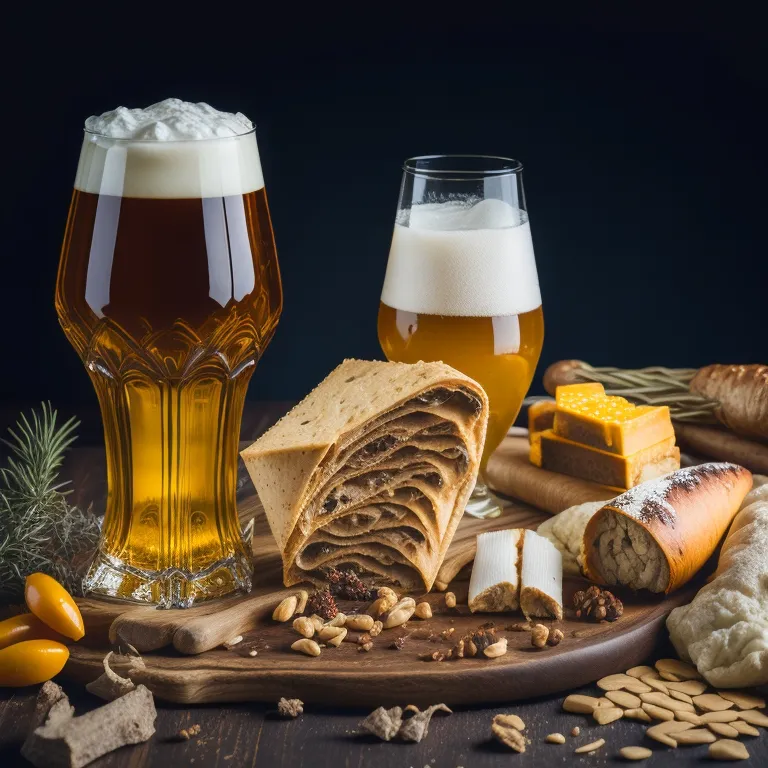
- Water: Drinking water between tastings can help to cleanse your palate. Make sure it’s plain water, as flavored or carbonated water can affect your taste buds.
- Bread or Crackers: Plain bread or unsalted crackers can help to absorb any lingering flavors in your mouth.
- Neutral Foods: Foods with neutral flavors, such as rice or plain yogurt, can also help to cleanse your palate.
- Take a Break: If you’re tasting several beers, it’s a good idea to take short breaks to give your palate a rest.
Remember, the goal of palate cleansing is to ensure each beer is tasted in isolation, giving it a fair and unbiased evaluation.
Avoiding common pitfalls and misconceptions
There are several common pitfalls and misconceptions in beer tasting that can hinder your craft beer experience. Here are some to avoid:
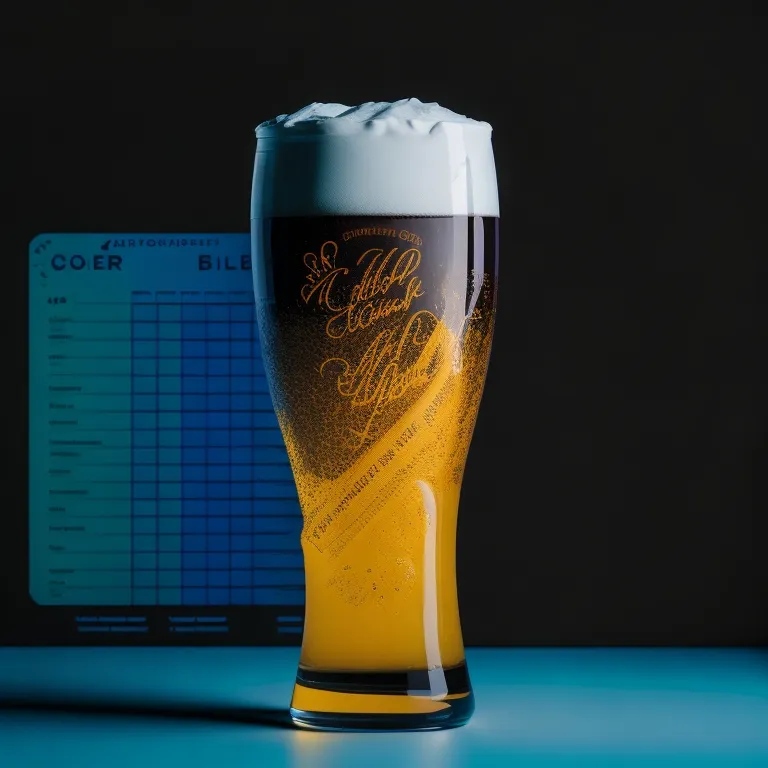
- Judging a Beer By Its Color: Many people associate dark beers with strong, bitter flavors and light beers with mild, refreshing flavors. However, color doesn’t necessarily correlate with flavor intensity or style. Don’t judge a beer by its color.
- Ignoring Aroma: A lot of a beer’s flavor actually comes from its aroma. Don’t skip the smelling step in your tasting process.
- Drinking Beer Too Cold: Serving temperature can greatly impact a beer’s flavor. Beers served too cold can have muted flavors.
- Not Tasting In Order: If you’re tasting multiple beers, order matters. Start with lower-alcohol, milder beers and progress to higher-alcohol, more flavorful ones.
- Not Taking Notes: When tasting multiple beers, it can be hard to remember the details of each one. Taking notes helps you remember and articulate what you liked or didn’t like about each beer.
By avoiding these common pitfalls and misconceptions, you can enhance your beer tasting skills and get more enjoyment from your craft beer tasting experiences.
Taking Your Beer Tasting Skills to the Next Level
Joining beer tasting clubs and communities
Becoming a part of beer tasting clubs and communities can significantly enrich your craft beer experience. These clubs are great platforms to learn, share experiences, and connect with fellow beer enthusiasts. They often host regular tasting events, offer expert-led sessions, and provide exclusive access to unique and limited-edition beers.

By joining a beer club, you can expand your taste horizons, discover new favorites, and deepen your understanding of beer’s diverse world. Additionally, it’s an opportunity to meet people who share your passion and engage in insightful discussions about different beers and breweries.
There are beer clubs and communities for every interest, whether you’re into local craft beers, international brews, specific beer styles, or sustainable brewing practices. Some clubs might focus on educating their members, while others might prioritize socializing and communal tasting experiences. Look for a club that aligns with your interests and goals in beer tasting.
Online communities also offer valuable resources for beer enthusiasts. Forums, blogs, and social media groups can be treasure troves of information, providing beer reviews, tasting tips, and news about the beer industry. They can also be platforms for asking questions, sharing your beer tasting experiences, and getting recommendations.
Attending beer festivals and guided tasting sessions
Beer festivals and guided tasting sessions are fantastic ways to immerse yourself in the culture of craft beer. They provide an avenue to sample a wide variety of beers, learn from experts, and interact with fellow enthusiasts.

Beer festivals showcase a wide array of breweries and their offerings. These events often feature tastings, food pairings, workshops, and the opportunity to meet the brewers themselves. They’re a great way to discover new breweries, explore different beer styles, and learn about the latest trends in the beer world.
Guided tasting sessions, often led by certified beer sommeliers or experienced brewers, offer a structured craft beer tasting experience. These sessions usually focus on a particular theme, such as a beer style, a brewing technique, or a geographic region. They provide expert insights into each beer’s characteristics, the story behind its creation, and tips for tasting and appreciating its unique qualities.
Whether you’re a novice or a seasoned taster, attending beer festivals and guided tasting sessions can deepen your appreciation of beer and sharpen your tasting skills.
Exploring advanced tasting techniques and certifications
For those who wish to delve deeper into the art of beer tasting, there are several advanced techniques and certifications to explore. Here are a few ways to take your beer tasting skills to the next level:

- Sensory Training: Sensory training courses can help you develop a more discerning palate and a richer tasting vocabulary. They often involve exercises to identify specific flavors, aromas, and textures in beer.
- Beer Judging Certification Program (BJCP): The BJCP offers a comprehensive certification for beer judges. It involves a rigorous examination of your beer knowledge and tasting skills. This certification can lend credibility to your tasting abilities and open opportunities to judge beer competitions.
- Cicerone Certification Program: Similar to a sommelier in the world of wine, a Cicerone is a certified beer tasting professional. The program offers four levels of certification, with each level requiring a deeper knowledge of beer styles, brewing, serving, and pairing with food.
- Advanced Tasting Techniques: Techniques like retro-nasal tasting (tasting while exhaling through the nose) can help you detect more subtle flavors and aromas in beer. Books, workshops, and online resources can teach these advanced techniques.
Investing time and effort in advanced tasting techniques and certifications not only enhances your craft beer experience but can also open doors to careers in the beer industry, such as a beer judge, brewer, or beer writer. It’s an exciting journey of continuous learning, tasting, and enjoying the wonderful world of beer.
Conclusion
In conclusion, the art of beer tasting is a fascinating and rewarding journey that goes beyond merely drinking beer. It’s an exploratory adventure through the rich tapestry of flavors, aromas, and textures that different beers offer. Each beer holds a unique story, reflecting the craftsmanship, passion, and philosophy of the brewer. When we engage in mindful tasting, we get to experience and appreciate this story in every sip.
More than just a hobby, beer tasting can become a lifestyle and a lifelong learning experience. From understanding the basics of beer tasting, enhancing your experience with the right techniques, pairing beer with food, avoiding common mistakes, and taking your skills to the next level, each step adds another layer to your appreciation of beer. It brings us closer to the heart of the craft beer industry, its communities, and its values.
FAQs
-
What are some tips for tasting different types of beer?
When embarking on the delightful journey of beer tasting, it’s crucial to equip yourself with a treasure map of tips to unlock the hidden wonders of various brews. Start by cleaning your palate; drink water and avoid strong flavors like coffee before tasting. Pay attention to the temperature, as different beers shine at specific temperatures. Also, it’s a sensory experience! So don’t just taste, but look, swirl, smell, sip, and savor. Use a beer tasting guide to jot down your observations. Experiment with diverse styles of beer – from malty ales to hoppy IPAs. Lastly, always drink responsibly. Happy exploring!
-
How can I become better at identifying beer flavors?
Identifying beer flavors is akin to training for a marathon; it takes practice and dedication. Begin by tasting different beers side-by-side to compare flavor profiles. Experiment with small sips and try to identify individual elements like malt, hops, and yeast. Engage your sense of smell as most flavors are intertwined with aromas. Educate yourself on common beer terminology. You might also want to take part in beer tasting workshops or join a local beer club. It’s a journey, and with each sip, you’re one step closer to mastering the art of identifying beer flavors.
-
What glassware should I use for beer tasting?
The type of glassware you use can greatly affect your beer tasting experience. Tulip glasses are great for strong ales and IPAs, as their shape helps in capturing the aromas. Pint glasses are versatile and are generally used for lagers and stouts. Weizen glasses are perfect for wheat beers, as they showcase the beer’s color and maintain the frothy head. Lastly, goblets are ideal for heavy, malty beers. Remember, a clean glass is vital. Any residual detergents or oils can compromise the beer’s flavor and head.
-
Are there any resources or books to learn more about beer tasting?
Absolutely! For the bibliophiles, “Tasting Beer” by Randy Mosher is the bible of beer tasting. Another great read is “The Brewmaster’s Table” by Garrett Oliver which delves into pairing beer with food. Online forums like BeerAdvocate or HomeBrewTalk are treasure troves of information and discussions. Don’t shy away from beer tasting courses and certifications, like the Cicerone Certification Program. These resources not only enhance your beer tasting skills but also connect you with a community of fellow beer enthusiasts.
-
Can beer tasting help me appreciate craft beers more?
Definitely! Beer tasting is like having a backstage pass to a concert; you get to appreciate the nuances and intricacies that go into making craft beers. By engaging your senses and understanding the ingredients, you connect with the craftsmanship and passion that brewers pour into each batch. The experimental nature of craft beers with their myriad flavors and styles further opens up a playground for your taste buds. So yes, beer tasting is your golden ticket to truly valuing the art of craft beers.
-
How do I know if a beer is fresh and of good quality?
To discern if a beer is fresh and of good quality, start by checking the expiration date on the bottle or can. Observe the color and clarity; though this varies with styles, generally, it should be free from haziness (unless it’s a style like NEIPA). Aroma plays a pivotal role; stale beers may have a musty or cardboard-like smell. Tasteit! Fresh beer should taste crisp and true to its style. Also, consider the source – buy from reputable stores or directly from breweries. Lastly, the beer’s head retention and carbonation are indicators; a good quality beer will have a lasting frothy head and appropriate carbonation for its style.
-
What are some common mistakes to avoid during beer tasting?
Stepping into the realm of beer tasting, it’s easy to trip over a few common pitfalls. Firstly, avoid tasting beer that is too cold, as it masks the flavors. Also, refrain from using improper glassware; the right glass enhances the experience. Don’t rush; savor and analyze each sip. Keep your palate clean; tasting beer right after a spicy meal or toothpaste won’t do justice. Also, don’t get swayed by preconceived notions about certain beer styles. Lastly, avoid consuming too much in one session, as alcohol impairs your ability to taste.
-
Is there a specific order in which I should taste different beers?
Absolutely! Just like a symphony, beer tasting should progress in harmonious crescendos. Start with lighter beers both in flavor and alcohol content, like lagers or pilsners. Progress to maltier, medium-bodied beers such as ambers or stouts. Conclude with strong, flavorful beers like IPAs or imperial stouts. This order ensures that your palate is not overwhelmed early on, and you can appreciate the nuances of each beer.
-
Are there any beer tasting events or festivals I should attend?
Oh, the world of beer festivals is vast and bubbly! In the USA, the Great American Beer Festival is a mecca for beer lovers. Europe boasts the glorious Oktoberfest in Munich, and the Belgian Beer Weekend in Brussels. For craft beer enthusiasts, the Craft Beer Rising festival in London is a must. Most cities have local beer festivals or tasting events, so keep an eye on event listings or join beer enthusiast groups to stay in the loop.
-
How can I host a beer tasting party at home?
Hosting a beer tasting party at home is an art and a science! First, choose a theme or style – it could be a specific type of beer or beers from around the world. Ensure you have the proper glassware and have a mix of beers for your guests. Prepare tasting cards for guests to jot down their thoughts. Pair beers with a variety of foods and snacks. Set the ambiance – a comfortable space, low music, and perhaps some beer-related décor. Educate your guests briefly on beer tasting techniques, and most importantly, ensure everyone drinks responsibly and has a safe way home. Cheers to an unforgettable night! 🍻

